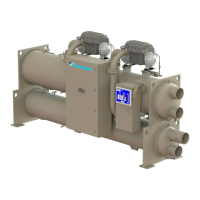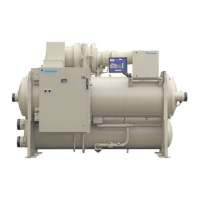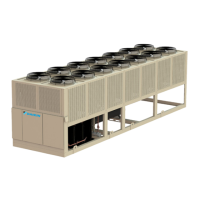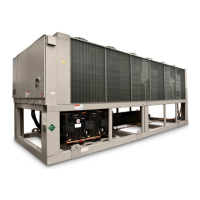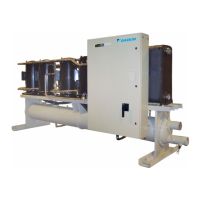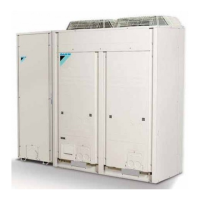55
IOM 1264-4
WWW.DAIKINAPPLIED.COM
MAINTENANCE
Step 5: Once the SP is set, it is recommended that the sensor be
locked to avoid inadvertent readjustment. This can be performed
by pressing both the ‘+’ and ‘-’ buttons simultaneously for 10
seconds. The indication goes out momentarily indicating the unit
is locked. To unlock, the same procedure is performed to toggle
to unlocked.
NOTE: 1. The LED window display on ow switch represents a
velocity range of 50 cm/s. The window centers on the
SP. For example, if the SP was set to 200 cm/s, then
the LED labeled ‘0’ would represent a velocity of 180
cm/s when lit and the LED labeled 9 would represent a
velocity of 230 cm/s when lit.
2. Each LED represents 5 cm/s, or two presses of the
‘+’ or ‘-’ buttons.
3. When power is initially applied to the ow switch, all
green LEDs light and go out step by step. During this
time, the output is closed. The unit is in the operating
mode.
4. When making manual adjustments to the SP, if no
button is pressed for two seconds, the unit returns to
the operating mode with the newly set value.
Flow below display range: The SP LED will be lit red and the
leftmost LED will be ashing green. For example, if the SP was
set to 200 cm/s, the ashing labeled ‘0’ would indicate that the
ow was below 180 cm/s. This would be shown if no ow through
chiller or lowered than desired ow.
Figure 38: Display for Flow Below Range
Flow above display range: The SP LED will be lit amber, all
LEDs to the left and right of the SP LED will be green with the
rightmost LED ashing green. For example, if the SP was set to
200 cm/s, the ashing LED labeled ‘9’ would indicate that the ow
was above 230 cm/s. This may be a normal display depending on
range by which ow varies through chiller.
Figure 39: Display for Flow Above Range
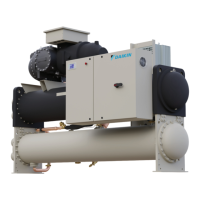
